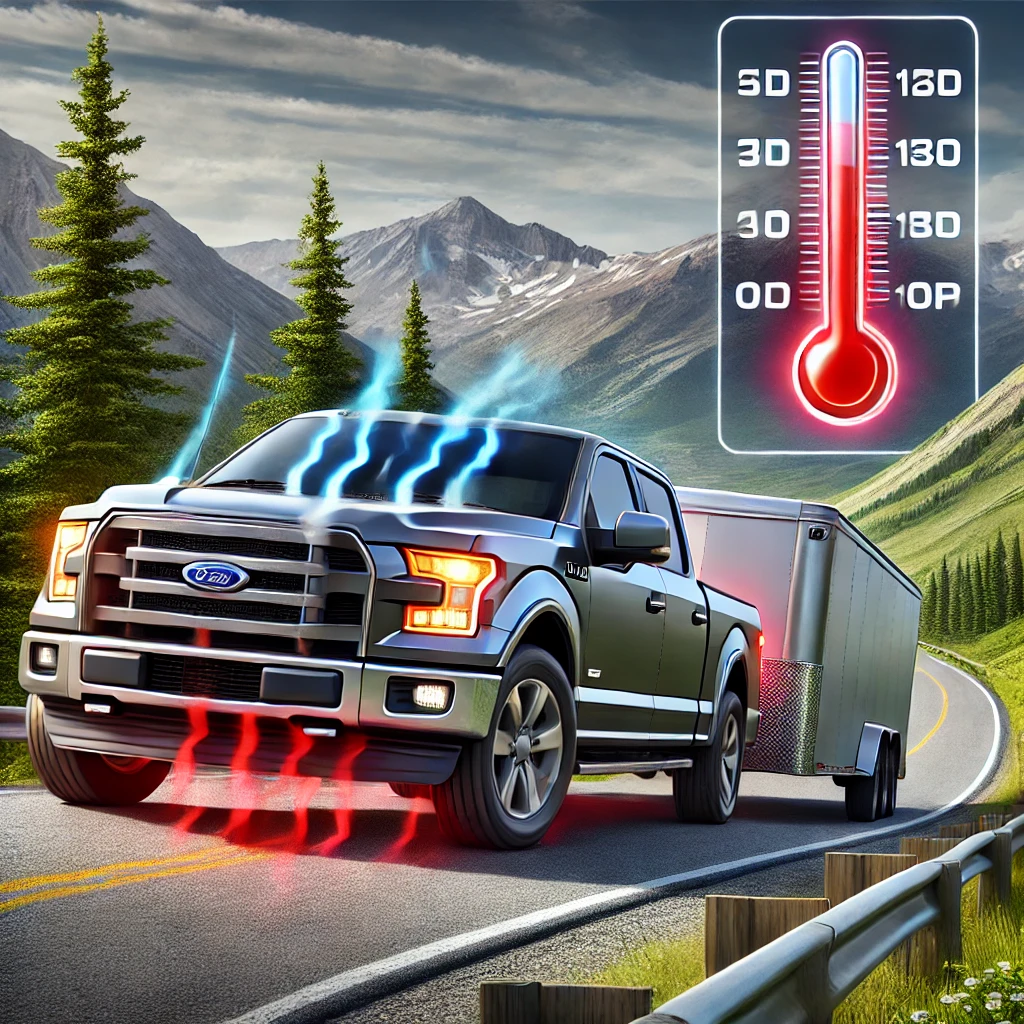Driving a 2013 Ford F150 V8 in high gear with low revs, especially while towing, is a common technique to save fuel. However, if you’ve observed that the engine temperature increases under these conditions, particularly when going uphill, and that it normalizes when you accelerate to increase revs and downshift, this behavior is worth discussing. It touches on engine performance, potential risks, and best practices when towing.
Understanding Engine Stress and Temperature
When you drive in high gear with low revs, particularly under load (such as towing uphill), the engine operates at a higher torque output. This can cause the engine to work harder to maintain speed, leading to increased internal friction and heat production. High torque at low revs means the engine isn’t spinning as fast, so the cooling system has less opportunity to dissipate heat efficiently. This results in the engine temperature rising.
Why Does the Temperature Normalize When You Downshift?
When you downshift and increase the engine revs, several things happen:
- Reduced Engine Load: Downshifting lowers the gear ratio, reducing the load on the engine and making it easier to maintain the required power output.
- Increased Coolant Flow: Higher engine speeds increase the circulation of coolant through the engine and radiator, enhancing the cooling system’s effectiveness.
- Improved Airflow: Faster engine speed often coincides with increased vehicle speed, which improves airflow through the radiator, further aiding in heat dissipation.
These factors contribute to the normalization of engine temperature when you accelerate and downshift.
Is This Normal?
Yes, it’s normal for the engine temperature to rise under heavy load, especially when towing in high gear and low revs. The engine is working harder, producing more heat, and the cooling system may struggle to keep up if the engine isn’t spinning fast enough. However, consistently operating the vehicle in conditions where the engine temperature rises significantly can lead to long-term issues.
Potential Concerns and Risks
While this behavior is normal, there are a few potential risks to be aware of:
- Overheating: If the engine temperature gets too high, it can lead to overheating, which may cause damage to components such as the head gasket, radiator, or even lead to engine failure.
- Reduced Oil Pressure: Operating at low revs under load can also reduce oil pressure, which is critical for lubricating and protecting engine components. Prolonged low oil pressure can lead to increased wear and tear.
- Increased Wear: The extra strain on the engine at low revs under load can cause increased wear on components like pistons, bearings, and the crankshaft over time.
Best Practices for Towing with a Ford F150 V8
To minimize the risks and ensure your engine stays in good health, consider the following practices:
- Avoid Prolonged High Gear, Low Rev Driving: When towing, especially uphill, avoid staying in high gear for too long. It’s better to downshift and let the engine rev a bit higher to reduce stress and improve cooling.
- Monitor the Temperature Gauge: Keep an eye on the engine temperature gauge, especially when towing. If you notice it climbing, downshift and increase revs to help bring it back down.
- Use Tow/Haul Mode: If your F150 is equipped with a tow/haul mode, use it. This mode adjusts the transmission shift points to keep the engine in a more optimal rev range for towing, reducing the likelihood of overheating.
- Regular Maintenance: Ensure your cooling system is in good condition, with regular checks of coolant levels, radiator condition, and thermostat functionality. Also, keep your engine oil fresh and topped up, as it’s essential for keeping the engine cool and lubricated.
In summary, while it’s normal for the engine temperature to rise when driving in high gear with low revs, especially under load, it’s important to manage this carefully to avoid potential issues. Downshifting to increase revs and reduce engine load is a good practice when you notice the temperature climbing. By following the best practices outlined above, you can ensure your Ford F150 V8 continues to perform reliably, even when towing heavy loads uphill.




